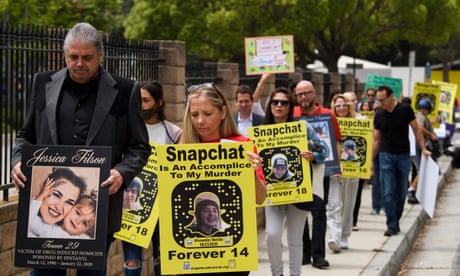- by foxnews
- 11 Jan 2025
Killed by a pill bought on social media: the counterfeit drugs poisoning US teens
Killed by a pill bought on social media: the counterfeit drugs poisoning US teens
- by theguardian
- 24 Dec 2021
- in technology

Seventeen-year-old Zachary Didier was waiting to hear back on his college applications when a fake Percocet killed him. Sammy Berman Chapman, a 16-year-old straight-A student, died in his bedroom after taking what he thought was a single Xanax.
Meanwhile, experts say drug dealing has moved away from dark alleys and street corners and on to social media, enabling young people to buy what they think are Xanax, Percocet or Oxycodone tablets from the privacy of their bedrooms.
Ed Byrne is tired of looking at dead bodies.
Byrne, a special agent for the investigations unit of the US Department of Homeland Security, works in cooperation with the DEA and local law enforcement agencies on a San Diego task force that focuses solely on fentanyl deaths.
Perla Mendoza believes it was a dealer on Snapchat who sold a fake Xanax that killed her son, 20-year-old Daniel Elijah Figueroa, on 16 September last year.
In August of this year, Neville and dozens of other parents of fentanyl victims lined up giant placards with photos of their lost children along the grand steps of the California state capitol. There were posters of kids in their school pictures, kids still in braces, kids giving the thumbs up on family beach trips.
The parents gave speeches, pleading for measures to prevent drug dealing on social media, more prosecutions of drug importers and better mental health treatment for troubled teens. Mostly, they just called on state legislators to do something to stop more kids from dying.
Didier was set to be one of the valedictorians of his high school class. But on the morning of 27 December 2020, his dad found him slumped over his desk after taking one pill labelled as Percocet that he obtained on Snapchat.
Jaime Puerta, who found his 16-year-old son Daniel Puerta-Johnson unconscious in his southern California home in April 2020, has helped parents organize protests outside the offices of Snapchat and on the streets of San Francisco, pushing for more action from social media sites, law enforcement and state regulators.
Eric Feinberg, vice-president for content moderation at the non-profit watchdog group Coalition for a Safer Web, said dealers were churning out new accounts faster than technology companies could take them down. Feinberg runs regular social media surveillance looking for drug sales online and says dealers often operate with little fear of getting caught.
For now, with dangers running so high, Safdar says the best thing parents and educators can do is talk to children about the deadly new stakes experimenting with drugs.
- by foxnews
- descember 09, 2016
TSA reveals top unusual finds at airport security checkpoints in 2024
The Transportation Security Administration released the "top catches" from 2024 with prohibited items found by agents across the country. See some tips for travelers.
read more





